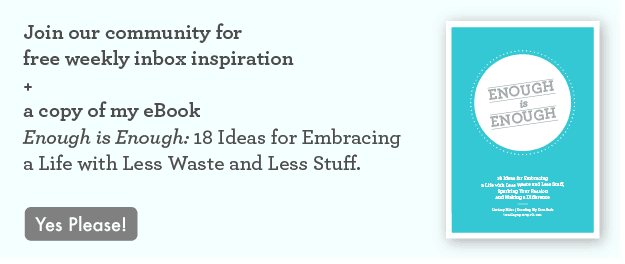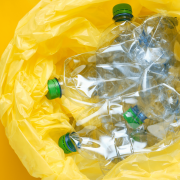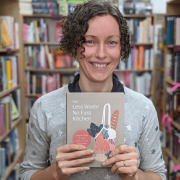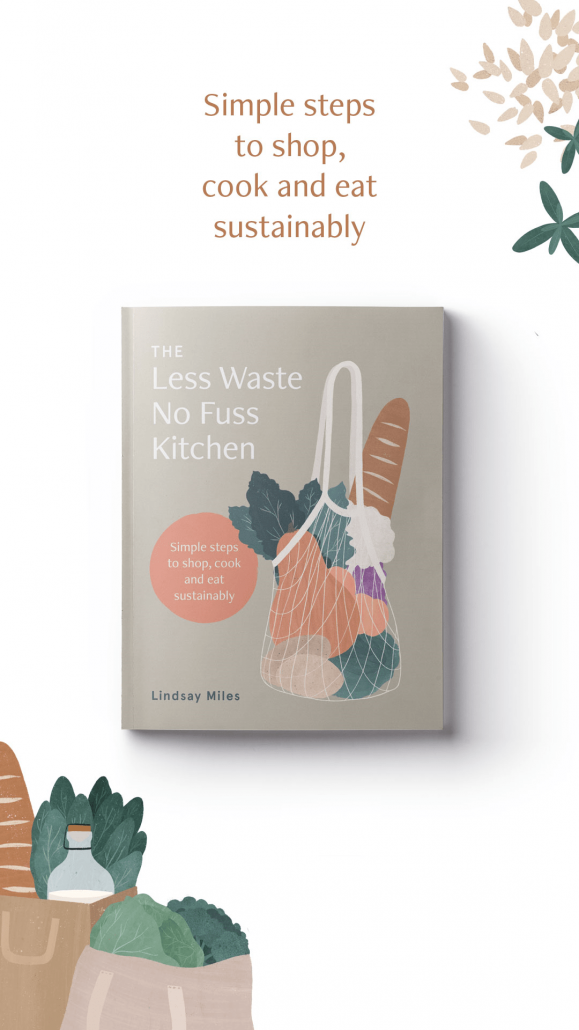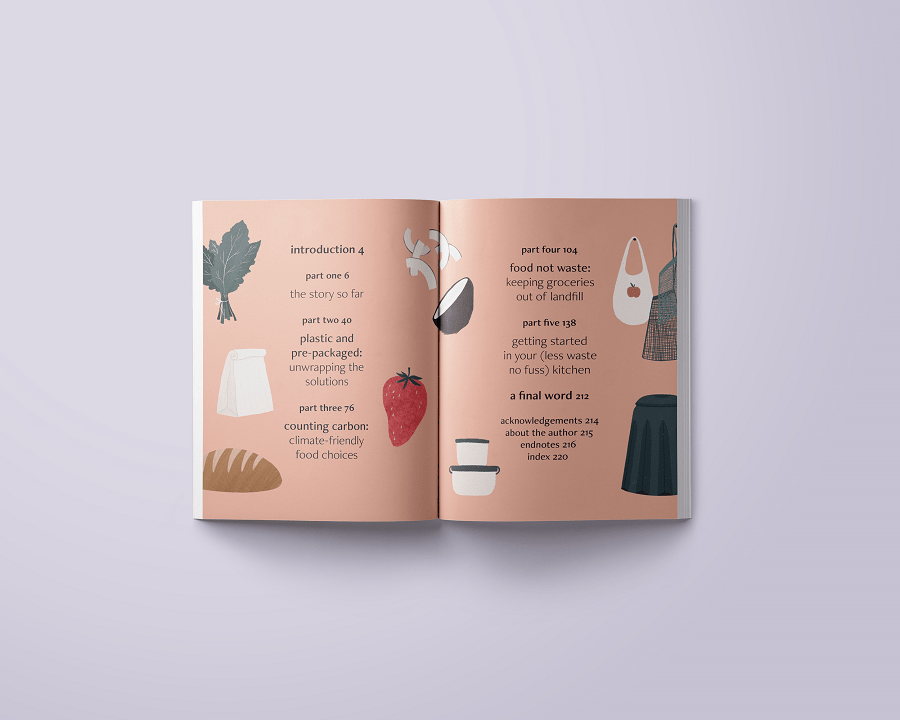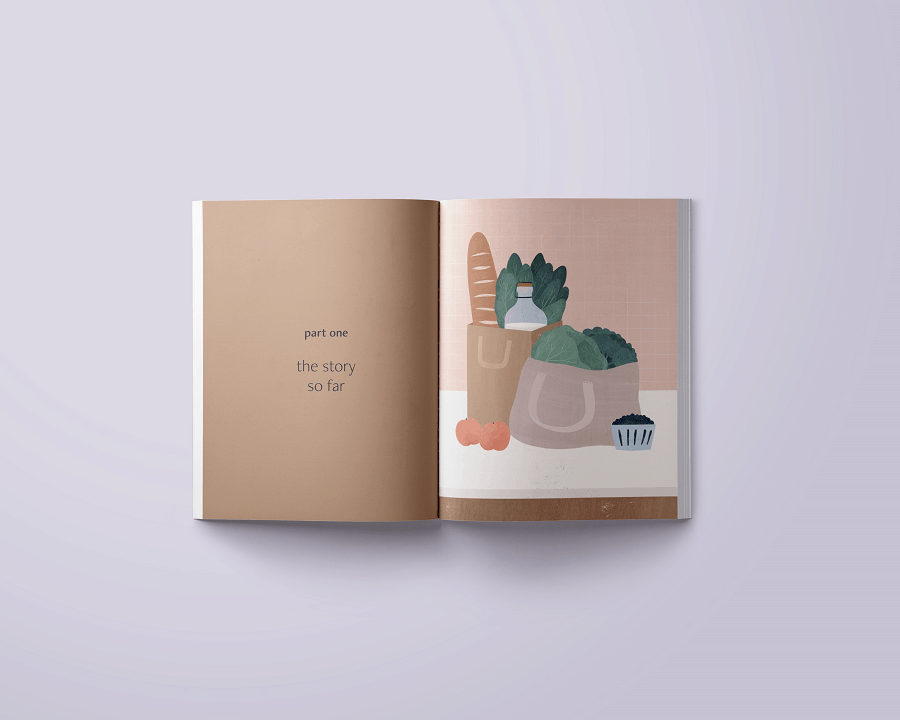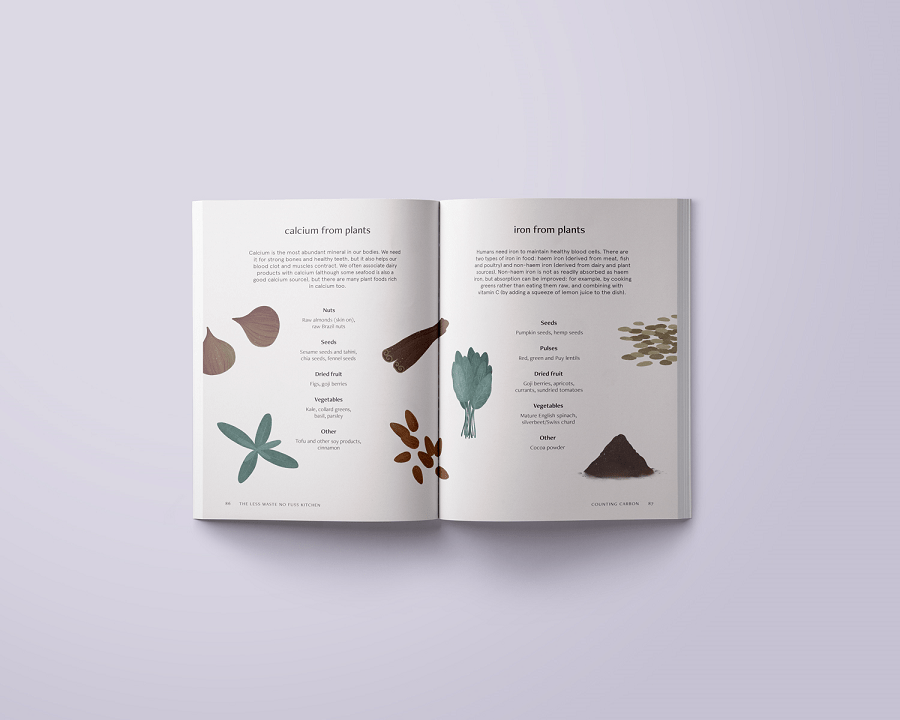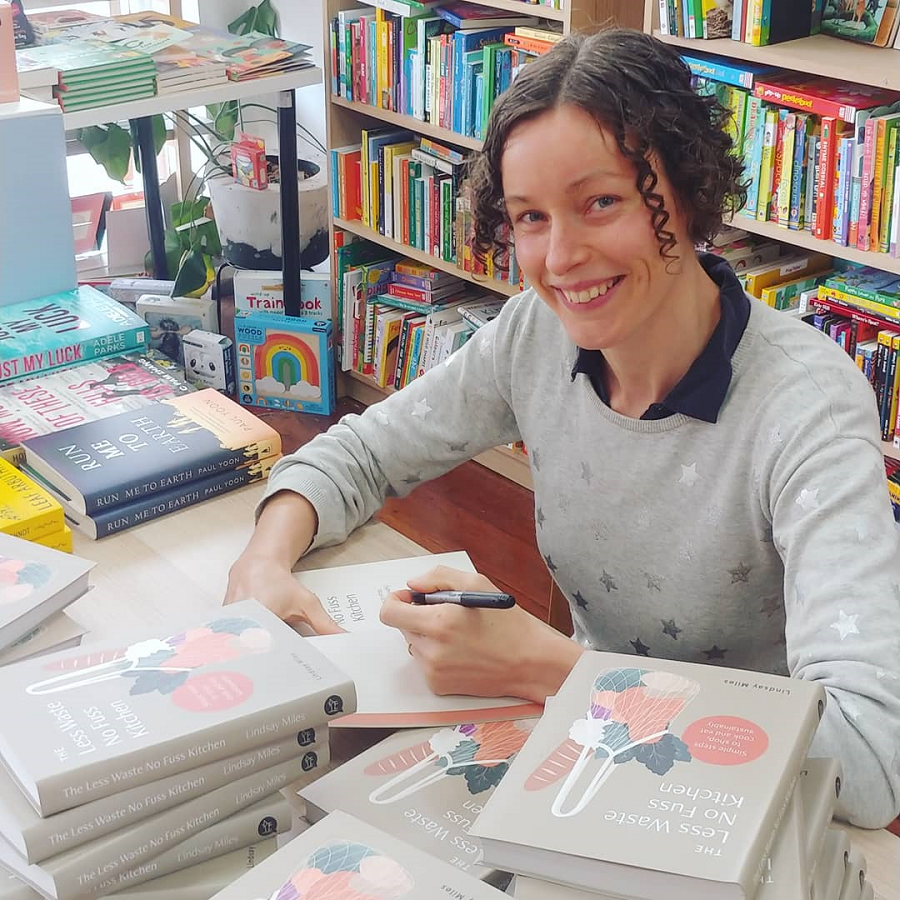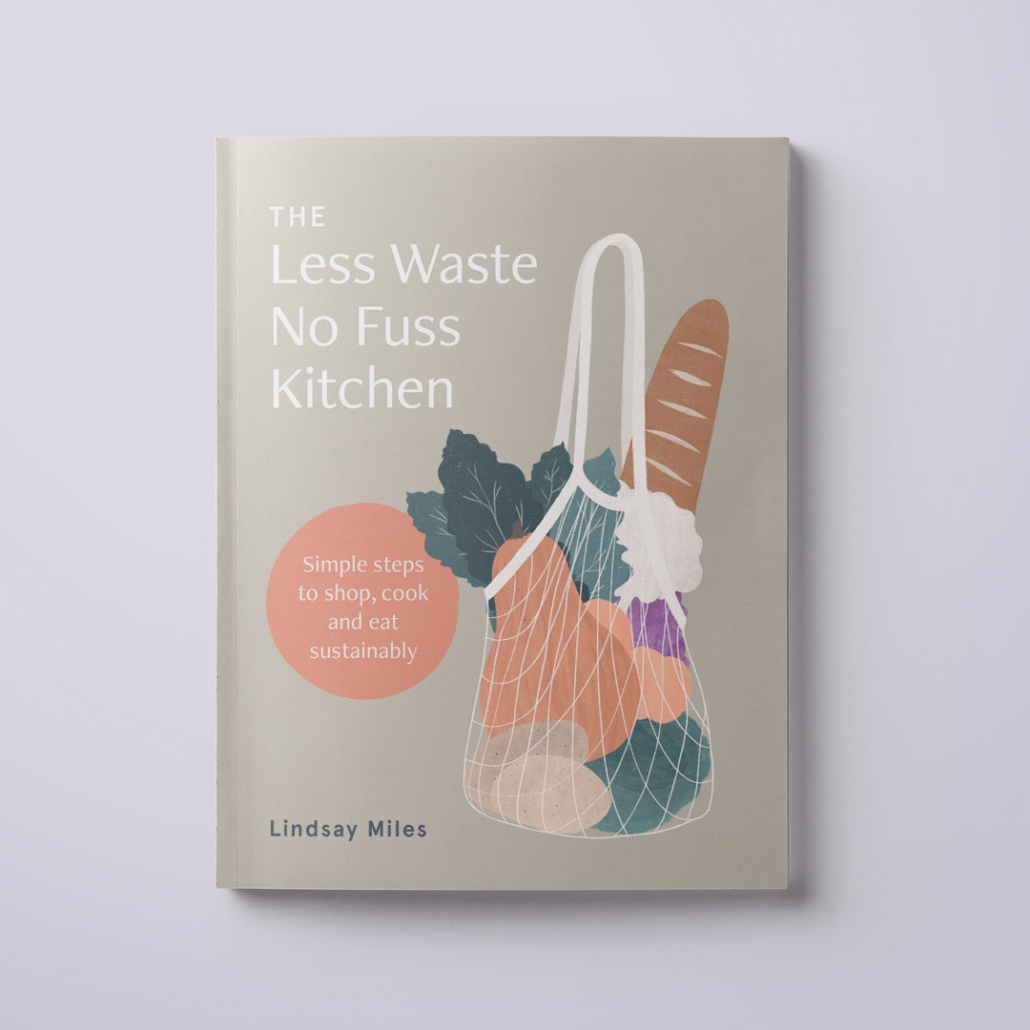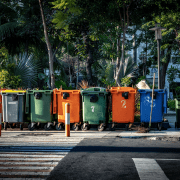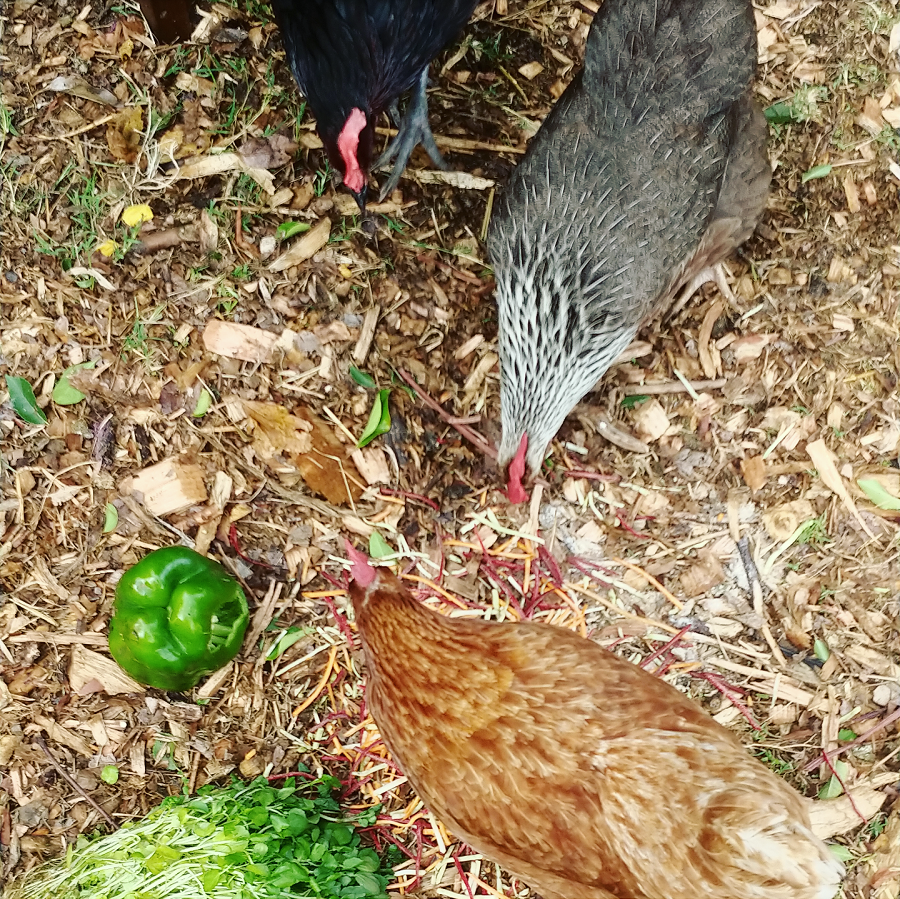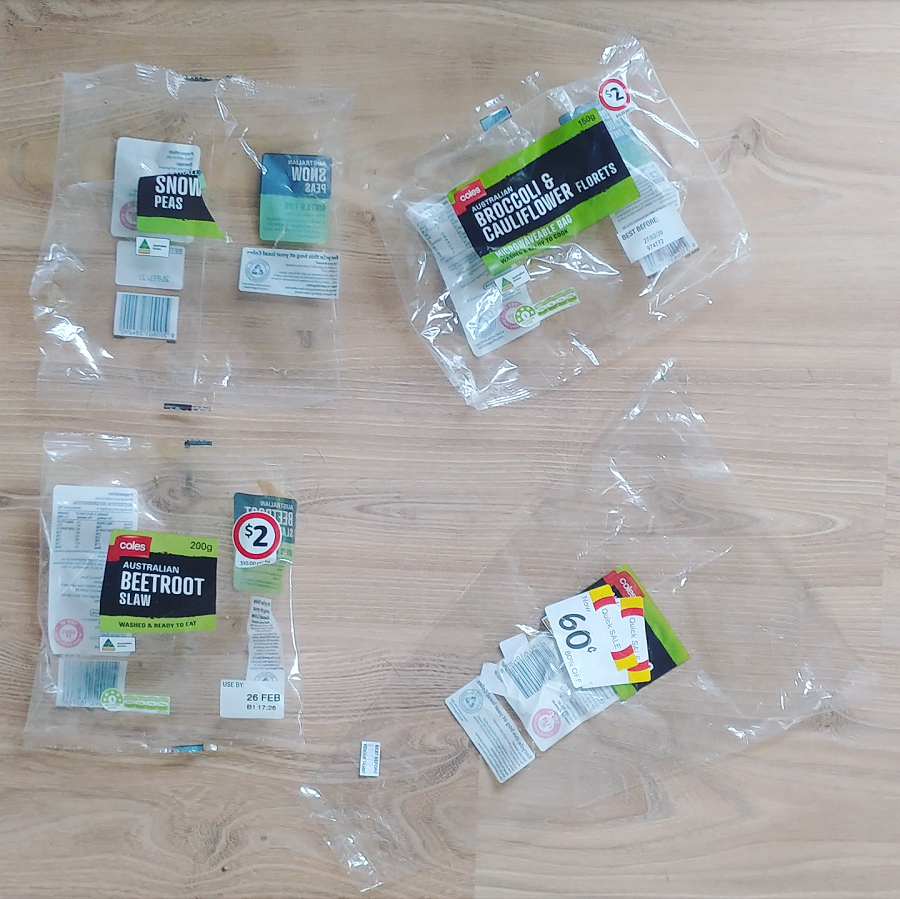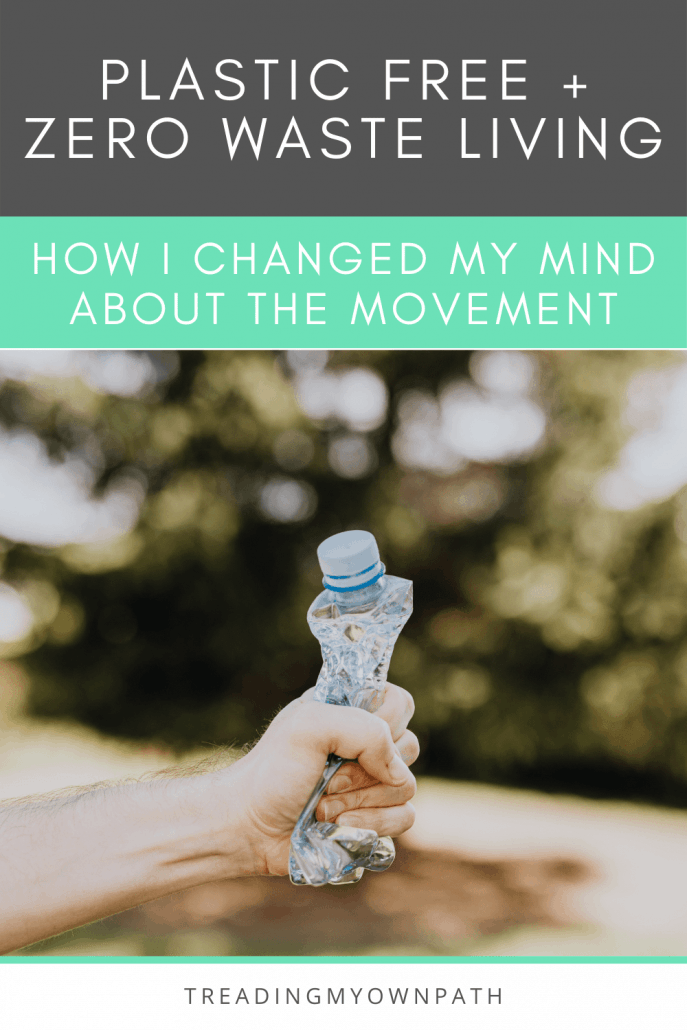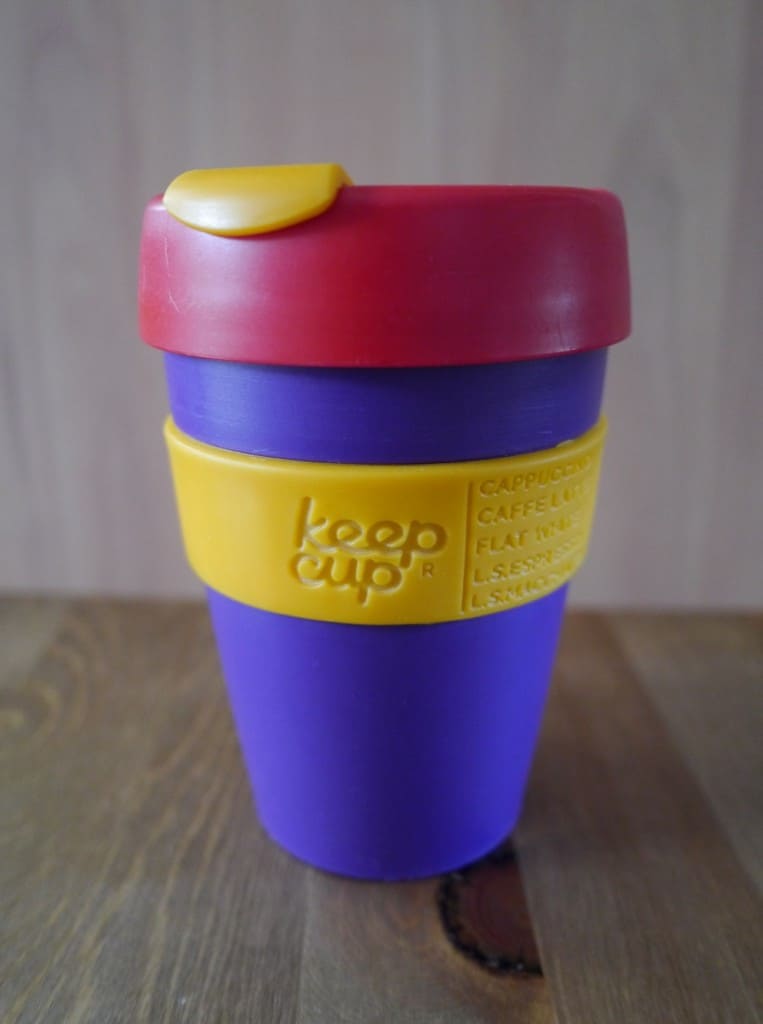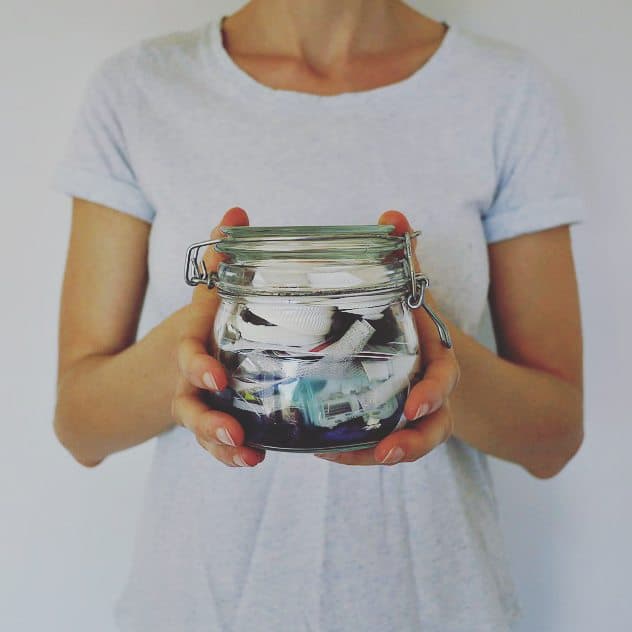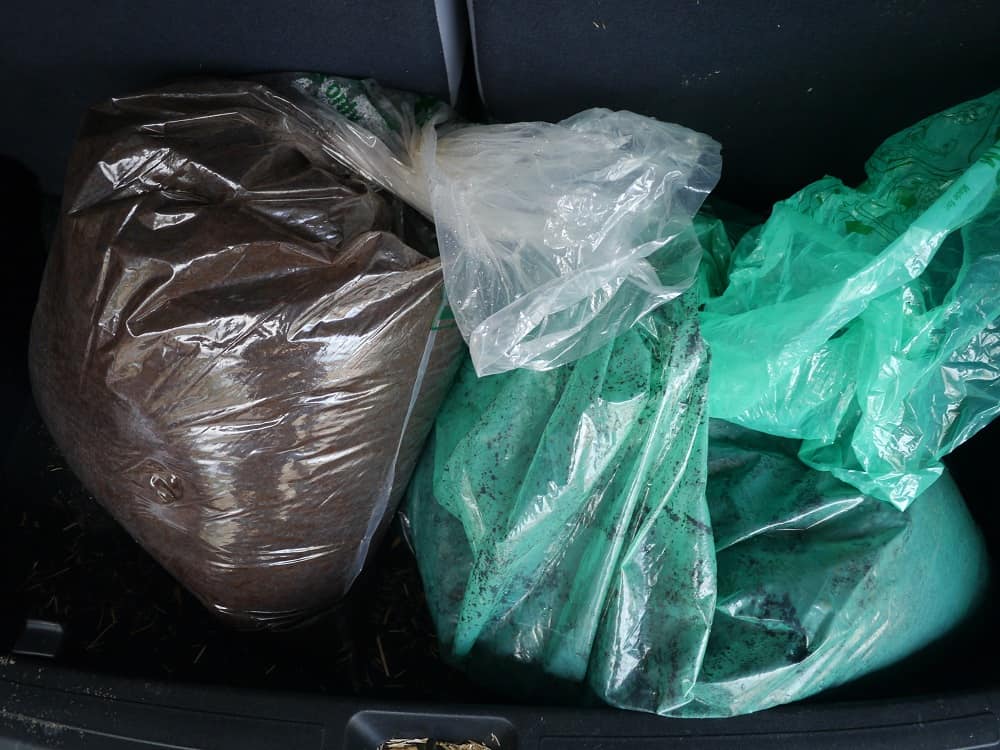37 ways to use less plastic in 2022
One of the most common sustainability goals that I hear is people wanting to use less plastic. It’s such an insidious material, plastic, seeping into every aspect our lives and causing litter, pollution, health issues, harm to wildlife, environmental damage… and using up valuable fossil fuels in the process (99% of plastic is currently made of fossil fuels).
But once its in our lives, getting it back out again can be quite the challenge!
When we think about ‘going plastic-free’ or ‘giving up plastic’ it sounds quite overwhelming, but that’s because we haven’t broken it down into smaller, bite-size pieces. Manageable pieces.
‘Going plastic-free’ might sound unattainable, but ‘buying loose carrots rather than pre-packed carrots’ or ‘bringing my water bottle from home’ don’t seem quite so tricky.
So, to help you get started on this journey to using less plastic, I’ve put together a list of 37 things that you can do to reduce your plastic use. Some you might be doing already. Others might still be in the too-hard basket (for now).
But some of them will be within your grasp, and you can edge a little closer towards your goal.
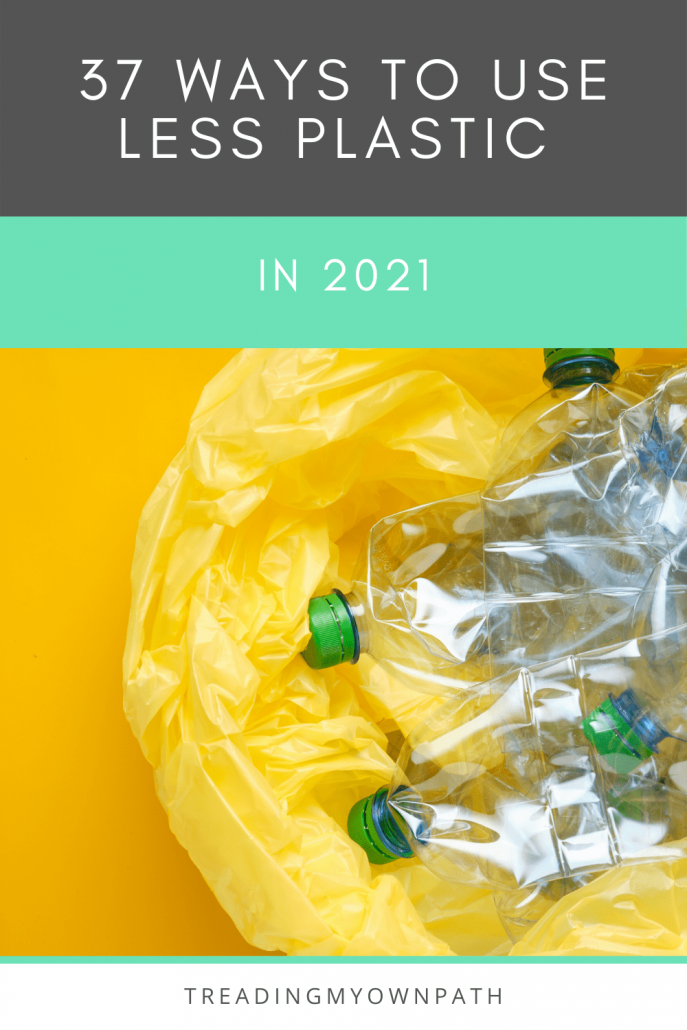
Food shopping
1. Buy groceries unpackaged. This might not be an option for everything, especially if you don’t have access to a bulk store, but even making a few simple swaps, like choosing the loose fruit and vegetables over the plastic-wrapped ones, or finding a loaf of bread that doesn’t come in a plastic bag will bring you one step closer.
2. Avoid plastic produce bags. If you’re buying fruits and vegetables unpackaged, rather than use the plastic produce bags, you can bring your own reusable produce bags, you can use paper mushroom or potato bags (if possible save them to reuse as paper bags have a bigger carbon footprint than plastic bags), or you can add everything loose into your trolley. If your store doesn’t allow reusable bags to be handled by staff, consider bagging up your own groceries at the checkout.
3. Refuse plastic shopping bags. Bring your own bags, use a cardboard box, hold things in your hands – whatever you can do to avoid plastic bags. If you unintentionally end up with plastic bags, save them and make sure you reuse them – ideally for future shopping trips.
4. Choose glass, metal and cardboard packaging over plastic. If you’re trying to cut down on plastic, choose other packaging types. You’ll find oats and pasta in cardboard boxes, oil and condiments in glass bottles and jars, coffee grounds in metal canisters, and so on. Even choosing brands that have metal lids over plastic lids is one less plastic item.
5. If you can’t avoid plastic packaging, choose the least amount. Sometimes plastic is really really hard to avoid. But you can avoid the wildly overpackaged things, like snack packs inside a bigger plastic bag or ‘fun size’ snacks, or tiny little pots of yoghurt.
6. Where there’s no choice to avoid plastic, choose recyclable plastic over non-recyclable plastic. If you have to choose plastic, try to choose plastic that can be easily recycled where you live (check your local council to find out exactly what can and cannot be recycled). Usually that’s plastic numbers 1 and 2 (PET and HDPE): these two plastics have the most value and are the most recycled. At least the plastic you use won’t be destined for landfill or incineration straightaway, and can be reprocessed and kept in use.
Food storage
7. Switch out plastic glad wrap/ cling film. There are heaps of great alternatives to single-use food wrap, from flexible silicone lids to rigid silicone lids to wax wraps to decanting leftovers into lidded containers (larger jam jars work well for this) to simply putting a plate on top of a bowl. (If you want more details, here are 7 plastic-free alternatives to food wrap.)
8. Embrace reusable containers. Great for leftovers, great for decanting any opened plastic packets that you’ve bought (and will do away with the plastic clip seals), great for taking a packed lunch. Here’s a guide for different reusable container options – but start with what you have, and reuse anything you can, even the plastic ‘single-use’ ones you have accumulated.
Food preparation
9. Replace retired kitchen tools with plastic-free or low plastic alternatives. As your plastic cooking utensils, chopping boards, jugs, servingware, small appliances and other kitchen items wear out, start choosing non-plastic materials instead. There’s a great second-hand market for kitchen tools so you may not have to buy new (plus second-hand is kinder on the budget).
10. Swap pre-packaged for homemade. No-one is suggesting that you start making everything from scratch. You’re busy and there’s already enough to do. But if you can identify the worst offender(s) – the things that you buy that are completely overpacked, the things that you buy the most often, or the things whose packaging drives you the most up the wall, consider experimenting with making from scratch. Whether it’s hummus, cookies, crackers, almond milk or something completely different. Carve out an hour of your week, and give it a go.
On the go
11. Carry a set of reusables in your bag / bike basket / car. Carry the things you’re most likely to use or need. Common items include a set of cutlery (or you could use a spork), a cloth napkin, a reusable coffee cup, a water bottle, and a reusable straw. (Here’s what I carry round with me.)
12. If you carry just one thing, make it a reusable coffee cup. Even if you don’t drink coffee. They are great as a cup for other beverages, including water, for carrying snacks, for carrying the remains of snacks (like apple cores or banana peels), and for transporting leftovers. If you’re short on space, you can get collapsible ones. If you’re on a budget, a sturdy jam jar does the job.
13. Get in the habit of saying no. Turn down the plastic sachets of sauce, the plastic straws, the plastic stirrers, the little packets of sushi ginger, the pre-wrapped cutlery napkin sets, the extra plastic bags, the hand freshener wipes, or any other unnecessary paraphernalia that comes with a purchase.
14. Choose the options that have less plastic. If you need to buy lunch out and all your options come in packaging, look for the ones that have no plastic and the least amount of packaging. Avoid the plastic clamshells and look for items in paper. Or consider dining in. (If you need to go, you can always order dine-in, then pack the item into your own container.)
Around the house
15. Reuse the plastic you already have. Yes you want to go plastic-free, but tossing all of your useful plastic out to ‘wipe the slate clean’ and ‘start afresh’ just wastes plastic. If you have plastic things, use them. If you no longer want to use plastic for food preparation, repurpose things to other areas of the house where possible (plastic storage containers can hold buttons, or laundry powder, or seeds for the garden).
Dental care
16. Switch out the plastic toothbrush. You could switch to a bamboo toothbrush, a reusable brush with a replaceable head, or even Miswak sticks. Failing that, look out for brushes made of certified compostable plastic.
17. Choose plastic-free floss. There are plenty of companies selling silk (including peace silk) or waxed floss in refillable glass containers. Some are packaged in cardboard.
18. Change from toothpaste to tooth powder, or tooth tablets. Before toothpaste was invented, people used tooth powder, and it is a lot easier to package a powder without plastic than it is a paste. Tooth powder usually comes packaged in tins or glass jars. Tooth tablets go one step further, pressing the powder into convenient tablets. You’ll find fluoride- and fluoride-free versions.
(This post has more ideas for a plastic-free bathroom.)
Skin and hair care
19. Switch from liquids to solid products (bar soap, solid shampoo, moisturiser bars). Liquid products consist mostly of water, which is hard to package without plastic. By choosing solid products over liquids, you’ll be able to find them in minimal plastic-free (and sometimes zero) packaging. Because they tend to be concentrated (you’re adding your own water as you use them) they might seem expensive, but they will last much longer and are more economical than you might think.
20. If you love liquids, choose concentrates that you dilute yourself. If you’re not ready to give up liquid handwash or shower gel, you can find concentrates designed to be mixed with water to make liquid products.
21. Simplify. Do you actually need to replace all of those plastic-free products that you buy, or could you just stop using them? Rather than looking for a plastic-free alternative for everything, see which products you can go without. You’ll save money and declutter your bathroom as well as reducing plastic.
22. Wash your hair with bicarb (or rye flour) and vinegar. Sounds weird, I know. But it works. It really suits my curly hair. If you’re worried about dry hair, use rye flour – it will leave your hair soft. Here’s a step by step guide for washing your hair with bicarb / rye flour and vinegar.
Personal care
23. Switch to reusable menstrual products. If you menstruate, consider using a reusable product rather than the single-use items. There are silicone cups, reusable cloth pads and menstrual underwear to consider. A silicone cup will last up to 10 years; pads will last 3 – 5 years and underwear a similar amount of time, maybe a little less.
Cleaning
24. Switch from laundry liquid to powder. As mentioned above, it’s much easier to package powder without plastic than it is to package liquid. (Bonus tip – liquid detergent used at low temps can gum up the insides of your machine. Especially when you wash at low temps. As told to me by a washing machine technician/plumber after using liquid at low temperatures gummed up the insides of my machine. Powder will make your machine last longer.)
25. Try green cleaning recipes. White vinegar, citric acid and bicarbonate of soda are all you need to clean most things, and a couple of essential oils (clove oil kills mould, tea tree oil is antibacterial). You’ll use way less plastic bottles this way, and your home will be healthier.
26. Switch plastic brushes and cloths to plastic-free alternatives. There are lots of plastic-free options to consider when your current items wear out: wooden dish brushes with replaceable heads, or those made from coconut fibres; reusable wood pulp and cotton wipes; coconut coir scourers; unpaper towel; knitted or crocheted dishcloths; dusters made with feathers; brooms made with palm branches.
Clothing
27. Look for plastic-free fibres. Most clothes are made of polyester, which is plastic. (So is nylon, rayon, organza, faux leather, spandex and polyamide.) When you need to replace items of clothing, look for plastic-free alternatives, or even blends (which is less plastic overall). Cotton, Tencel and hemp are options for vegans; silk and wool are additional options for non-vegans.
28. Buy second-hand clothing. Buying clothing second-hand is a great way to stop new plastic being made. You’ll find plenty of lightly used and even ‘brand new without tags’ items. If you have particular brands you like, seek these out on second-hand selling platforms.
29. Wash your clothes less. Yep, you can reduce your plastic by washing your clothes less. Washing your clothes wears the fabric and eventually causes pilling, fading and creates misshapen clothes. Try airing outside if it just needs a refresh, spot cleaning, or if something isn’t too dirty, a quick rinse on a cold cycle will be fine.
30. Line-dry rather than tumble-dry. Using a tumble drier decreases the lifespan of your clothing. The abrasion and hot temperatures wears the fabric out much more quickly than line drying, meaning you’ll be replacing them much faster (and new clothes tend to mean more plastic.)
31. Use a Guppyfriend laundry bag. Plastic clothing releases plastic microfibres into our waterways. Some fabrics are worse than others (fleece made out of recycled plastic releases the highest amount of fibres). If you have a lot of polyester clothing you can use a Guppyfriend laundry bag when washing your clothes to capture the fibres before they go down the drain.
Stuff
32. Second-hand first. The less stuff we buy new, the less packaging we end up with. Plus we keep useful items in circulation. There is second-hand everything out there: from furniture to homewares to electronics to kids toys to kitchen appliances to kitchen tools to gardening stuff and everything in between. Get in the habit of checking Facebook Marketplace, Gumtree, Craigslist or local charity shops before you decide to buy it new.
33. If you need something new, buy from a physical store rather than online. Not always possible for everything, especially in the time of Covid. But if you don’t want to receive the oversized box filled with plastic packing peanuts, bubble wrap and other plastic, buy from a store. Even ‘click and collect’ services will probably have less plastic than a mailed item.
(You’ll also be sure that what you buy is what you need, so no need to receive the wrong thing and have to return it.)
The sharing economy
34. Borrow before buying. There are so many formal and informal ways to borrow stuff. Libraries have books, DVDs, CDs, board games and magazines. And then there are toy libraries, tool libraries, and libraries of things. You can join your local Buy Nothing group and informally borrow items through there, or ask neighbours and friends.
Mindset
35. Embrace the old. The more we lose the habit of ‘updating’ and ‘upgrading’, the less stuff we buy and the less resources we use. If something still works, hang onto it. The more times you wear the same outfits and accessories, the better.
36. Fix stuff. When something breaks, investigate whether its fixable before you throw it away. Maybe the company sells spare parts, maybe iFixit has a repair manual online, maybe you can take to a local repair cafe for their opinion. If you can’t fix it, see if you can give the item away for parts.
37. Don’t let one plastic purchase derail your efforts. Couldn’t find a plastic-free alternative? Thought it was plastic-free until you got it home? Ended up with unexpected plastic? We all end up with plastic in our homes at some stage. It’s no-one’s fault, the system we live in really isn’t set up for plastic-free living. The worst thing you can do is let it get you down, or derail your efforts. There will always be exceptions, accidents, mishaps.
Rather than worry about these, focus on the hundred and one – or maybe just thirty-six – other things you can do.
Now I’d love to hear from you! What tips would you add to this list? Are there any plastic-free swaps you’re working towards in 2022? Are you trying to improve and start new habits this year, or refocusing on those you’ve let lapse? Anything else you’d like to add? Please share in the comments below!
